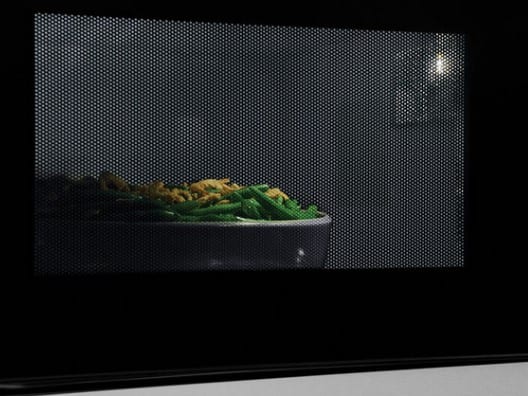How Does a Microwave Work?
Posted on January 25, 2024 By Alison P
You use it practically every day for tasks like heating up leftovers or making popcorn, but have you ever wondered how exactly a microwave works? We're here to give you a quick overview of how this kitchen wonder operates, bringing you a greater appreciation for everything that comes between the taps of the keypad and the "Food Is Ready" beep.
When Was the Microwave Invented?
Like many great scientific discoveries, the use of microwaves to cook food seems to have been discovered by accident! During World War II, an American physicist named Percy Spencer had been working on combat radar technology, and was standing near an active radar set when he noticed a candy bar in his pocket had completely melted. He went on to experiment with using microwaves to cook foods like popcorn and eggs, and in 1945 the company he worked for - Raytheon - filed for a patent on a microwave cooking oven. The microwave oven made its commercial debut in 1947 and was originally called the Radarange ("Radar" + "Range"). It weighed around 750 pounds, measured about six feet tall, and cost $5000 (over $70,000 in 2024 dollars). As time went on, a more practical and affordable version debuted in the late '60s, and as microwaveable meals became more ubiquitous, so did the microwave oven. By 1997, a microwave oven was present in over 90% of American households.
What Are Microwaves?
Microwaves are high-frequency electromagnetic waves that, in this particular usage, are used to make molecules in food move around to generate heat. The "micro" in the word microwave is a reference to its short wavelength, and microwave frequency ranks above ordinary radio waves and below infrared in the electromagnetic spectrum. In addition to cooking, microwaves are used in large-scale applications like radio astronomy, radar and spacecraft communications, and smaller-scale uses like garage-door openers.
How Does a Microwave Oven Work?
A device called a magnetron generates the microwaves inside the unit, and the metal oven chamber keeps the waves contained within the inside of the oven. When the magnetron powers up, it emits waves that get the food's molecules spinning around in an effort to align themselves with the alternating electromagnetic field. The rapid movement of these molecules creates friction and increases the temperature of the food or beverage inside of the microwave oven. (It's kind of similar to how an induction range stovetop heats up a pot or pan.) That rotating turntable that the food is placed upon allows the food or beverage being heated to receive an even distribution of these waves, heating it up as evenly as possible for maximum culinary satisfaction.
Now that you've got a better understanding of the way your microwave works, we hope you have a new reverence for your trusty heater of leftovers. Just be sure that container is microwave safe!